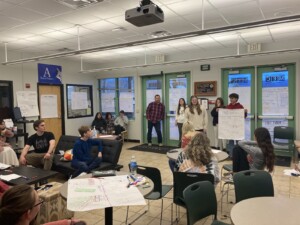Why Measuring Student Growth Matters Now More than Ever

By: Sarah Godlove Evans
Editor’s Note: This is the first of a two-part series from Northwest Evaluation Association (NWEA) about measuring student academic growth. Recently, NWEA has issued a series of white papers exploring this topic, designed to offer practical insights and pragmatic learning around measuring student growth for educators, parents, and policy makers, that each can use to drive learning for all students.
The National Assessment of Educational Progress (NAEP) results recently revealed that more than sixty percent of fourth and eighth graders are performing below grade level in both reading and math. And while we have made some progress towards closing certain economic and racial achievement gaps, dramatic and troubling differences remain for students facing the disadvantages of poverty, in particular—including reduced student vocabularies and higher dropout rates.
Facing these and other challenging realities of education in America, our students and teachers have been asked to meet a higher bar on the more demanding standards of the Common Core. As we’ve seen already from New York and Kentucky’s experiences with summative Common Core assessments, a greater number of students will perform below proficiency levels as the roll out continues across the country. The twin challenges of existing proficiency gaps and more demanding standards leave educators facing a tremendous instructional crisis.
How can we ensure that teachers have the tools they need to be successful and that students are supported as learners?
One possible answer lies in the data that we rely on for evidence of student progress. When our measurement of students is limited to achievement of grade-level proficiency on an annual basis we learn only whether or not he or she is meeting grade-level expectations at that moment in time. Even with intensive interventions, a student facing multiple barriers to learning may be labeled not proficient for several years in a row.
Measures of student academic growth can give teachers a more nuanced understanding of student achievement that’s useful for instruction. Academic growth happens for students even when they are below proficiency cuts. Consider, for example, a sixth grade student who begins the year having only mastered third grade math concepts and ends the year at the level of a fifth grader. He has made enormous progress, despite the fact that he has not yet met proficiency. In this case and in others, it is imperative that:
- The teacher gets insight into the student’s starting point and progress throughout the year so that he can adapt instruction accordingly;
- The student is encouraged and applauded for his achievements and given feedback on areas that remain challenging; and
- His future teachers understand his achievement and his starting point for new learning.
With growth data, educators are able to better pinpoint whether specific instructional strategies and interventions hold promise and adjust over the course of the school year (particularly if they get that data in a timely manner).
Growth is also a helpful lens at the team, school and system levels. School and district leaders can consider the overall progression of the student body along a continuum towards academic standards, look for promising or troubling patterns and trends, and use that data to inform resource allocation and decision-making. In particular, growth measures can help schools implementing new instructional strategies aligned to the Common Core or other standards better understand what’s working for students.
Now more than ever, we need to shift the conversation about teaching and learning from a punitive, win/lose calculation to one that recognizes its incremental and sometimes exponential nature. Let’s support that process with student growth data to build strong instructional strategies and vocabulary that encourages students at every step along the way.
Download the first, second and third articles in NWEA’s series on growth data to learn more about why and how to measure student growth. NWEA authors Matt Chapman, Raymond Yeagley and Anne Udall have previously written for Getting Smart about educator evaluation.
Sarah Godlove Evans is NWEA’s Assessment Product Manager. With more than twelve years’ experience in education and assessment, she has served as a middle-school math and science teacher, a content design manager, a director of assessment and instructional design, a content specialist, an item and test development consultant, and a pre-service teacher trainer.




Dan McGuire
Measures of growth that are managed by someone other than the teacher and that are't correlated to teacher actions are insufficient. We can do better. We have the ability to make standardized testing obsolete.
http://developingprofessionalstaff-mpls.blogspot.com/2012/10/evaluating-teachers-part-five.html
Replies
Tom Vander Ark
Current growth measures are estimates for cohorts based on year end tests. I'd like dynamic measures based on multiple metrics (experience embedded & teacher observations). With blended models, we also need to recognize that many teachers are working in teams--and evaluation systems should reflect that.
Mary Rossi
Measuring grade levels alone gives teachers very little insight into true student progress. A new breed of evaluation software that measures the essential points of student growth such as ability to concentrate, listen, understand directions, etc. can be seen here: http://merge-education.com/sets-evaluation-management-software.php